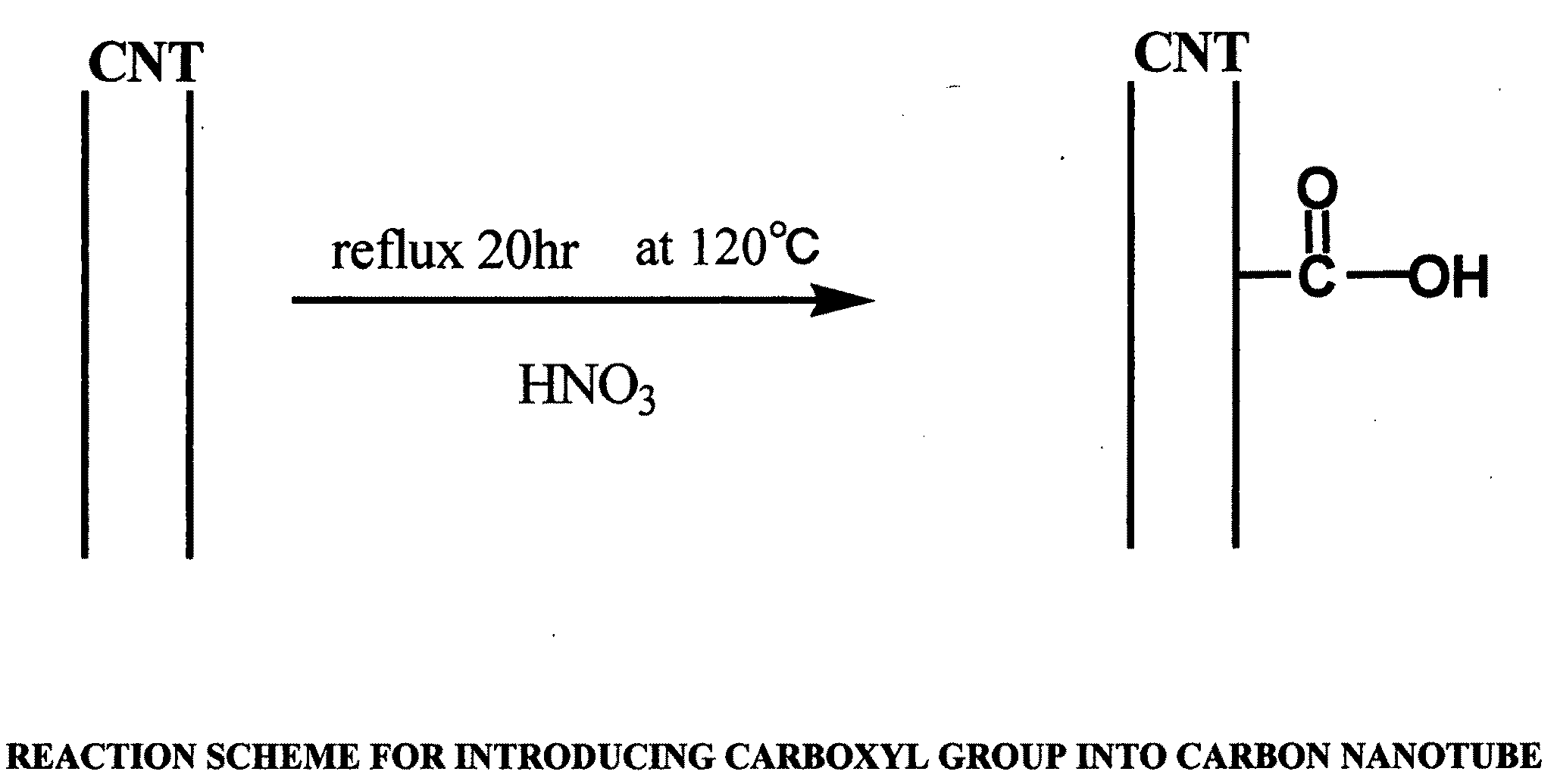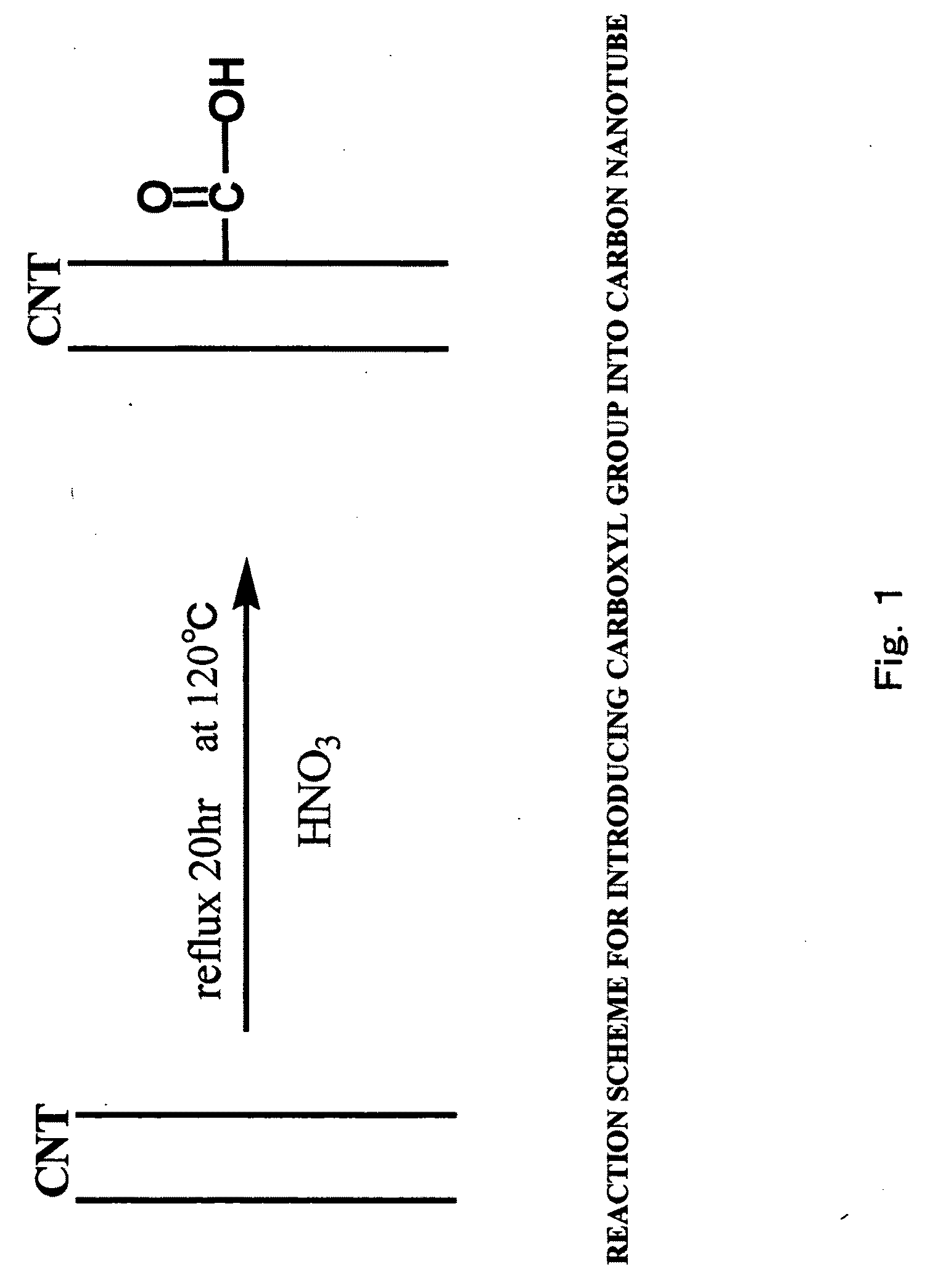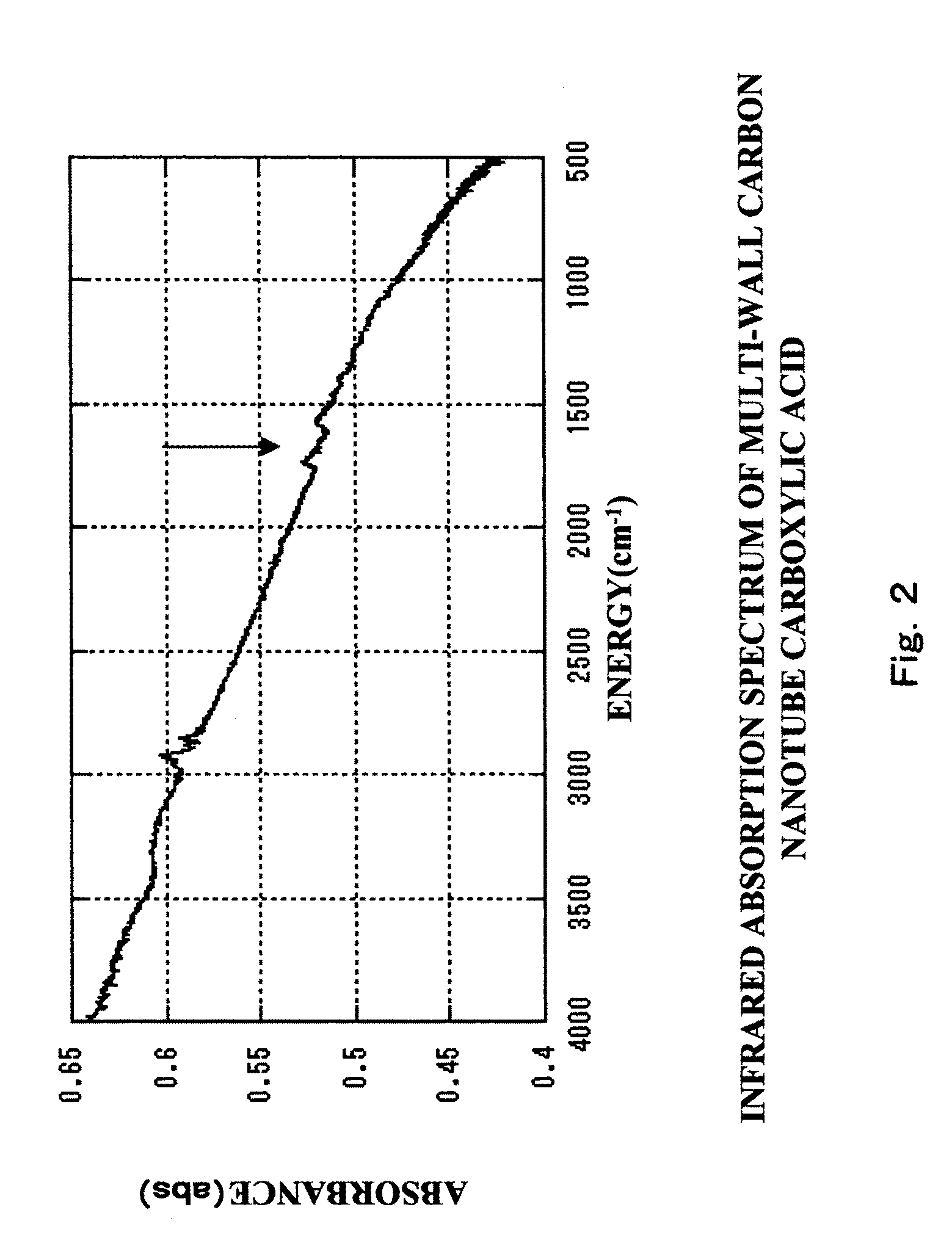Liquid mixture, structure, and method of forming structure
a liquid mixture and structure technology, applied in the direction of non-metal conductors, conductors, transportation and packaging, etc., can solve the problems of insufficient utilization of excellent characteristics of carbon nanotubes such as the difficulty of using carbon nanotubes as a material, etc., to achieve high electron- and hole-transmission characteristics, high reactivity, and easy introduction of carboxyl groups
- Summary
- Abstract
- Description
- Claims
- Application Information
AI Technical Summary
Benefits of technology
Problems solved by technology
Method used
Image
Examples
example 1
Synthesis of Multi-Wall Carbon Nanotube Paint Crosslinked by Using Glycerin and of Coat
(Adding Step)
(1) Addition of Carboxyl Group . . . Synthesis of Carbon Nanotube Carboxylic Acid
[0127]30 mg of multi-wall carbon nanotube powder (purity: 90%, average diameter: 30 nm, average length: 3 μm, available from Science Laboratories, Inc.) were added to 20 ml of concentrated nitric acid (60 mass % aqueous solution, available from Kanto Kagaku) for reflux at 120° C. for 20 hours, to synthesize a carbon nanotube carboxylic acid. A reaction scheme of the above is shown in FIG. 1. In FIG. 1, a carbon nanotube (CNT) portion is represented by two parallel lines (the same applies for other figures relating to reaction schemes).
[0128]The temperature of the solution was returned to room temperature, and the solution was centrifuged at 5,000 rpm for 15 minutes to separate a supernatant liquid from a precipitate. The recovered precipitate was dispersed in 10 ml of pure water, and the dispersion liquid...
example 2
Synthesis of Single-Wall Carbon Nanotube Paint Crosslinked by Using Glycerin and of Coat
[0138](1) Purification of Single-Wall Carbon Nanotube
[0139]Single-wall carbon nanotube powder (having a purity of 40%, available from Aldrich) was sieved (with a pore size of 125 μm) in advance to remove a coarse aggregate. 30 mg of the remainder (having an average diameter of 1.5 nm and an average length of 2 μm) were heated at 450° C. for 15 minutes by means of a muffle furnace to remove a carbon substance other than a carbon nanotube. 15 mg of the remaining powder were sunk in 10 ml of a 5N aqueous solution of hydrochloric acid {prepared by diluting concentrated hydrochloric acid (a 35% aqueous solution, available from Kanto Kagaku) with pure water by 2 fold} for 4 hours to dissolve a catalyst metal.
[0140]The solution was filtered to recover a precipitate. The recovered precipitate was subjected to a combination of the steps of heating and sinking in hydrochloric acid 3 more times for purifica...
example 3
Synthesis of Multi-Wall Carbon Nanotube Paint Crosslinked by Using Ethylene Glycol and of Coat
(Adding Step)
(1) Addition of Carboxyl Group . . . Synthesis of Carbon Nanotube Carboxylic Acid
[0154]30 mg of multi-wall carbon nanotube powder (purity: 90%, average diameter: 30 nm, average length: 3 μm, available from Science Laboratories, Inc.) were added to 20 ml of concentrated nitric acid (60 mass % aqueous solution, available from Kanto Kagaku) for reflux at 120° C. for 20 hours, to synthesize a carbon nanotube carboxylic acid.
[0155]The temperature of the solution was returned to room temperature, and the solution was centrifuged at 5,000 rpm for 15 minutes to separate a supernatant liquid from a precipitate. The recovered precipitate was dispersed in 10 ml of pure water, and the dispersion liquid was centrifuged again at 5,000 rpm for 15 minutes to separate a supernatant liquid from a precipitate (the above process constitutes one washing operation). This washing operation was repeat...
PUM
| Property | Measurement | Unit |
|---|---|---|
| length | aaaaa | aaaaa |
| diameter | aaaaa | aaaaa |
| diameter | aaaaa | aaaaa |
Abstract
Description
Claims
Application Information
 Login to View More
Login to View More - R&D
- Intellectual Property
- Life Sciences
- Materials
- Tech Scout
- Unparalleled Data Quality
- Higher Quality Content
- 60% Fewer Hallucinations
Browse by: Latest US Patents, China's latest patents, Technical Efficacy Thesaurus, Application Domain, Technology Topic, Popular Technical Reports.
© 2025 PatSnap. All rights reserved.Legal|Privacy policy|Modern Slavery Act Transparency Statement|Sitemap|About US| Contact US: help@patsnap.com



